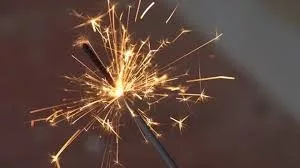
WEST LAFAYETTE, Ind. — The Fourth of July holiday is this week and that means bright colors and big booms are coming to the night sky.
Fireworks are a staple of the Independence Day celebration in the U.S., but how do they work exactly?
Marcy Towns, a chemistry professor and the associate dean for leadership excellence in the College of Science at Purdue University, is able to explain the chemistry behind all the effects of fireworks.
A firework consists of a circular tube with a fuse connected to a black powder charge.
“You have a tube that the charge goes down into and there’s a fuse and you ignite the fuse,” Towns explains. “When the fuse burns down, it hits a black powder charge that propels the firework up into the sky.”
While in flight, a secondary timing fuse starts to burn towards the center of the firework.
“The middle of the firework ignites the material in it and it explodes out into beautiful colors and shapes that we call fireworks,” said Towns.
The color of the firework is based on the chemical compounds that they are composed of. Red uses strontium, yellow uses sodium, green uses barium and blue (the hardest compound to make) uses copper.
Sounds are also a big part of the “full-body experience” of a fireworks show.
“Big booms are created by having a powdery substance that rapidly burns and releases gases that creates a soundwave,” Towns said.
If a firework uses sparkles or flashes, those are created by incorporating aluminum, magnesium and/or titanium.
Fireworks that whistle use material packed into a tiny tube. As the material burns and escapes the tube, it creates a whistling sound, similar to blowing air across the top of a bottle.
There are also fireworks that crackle. They use bigger particles primarily made of bismuth.

